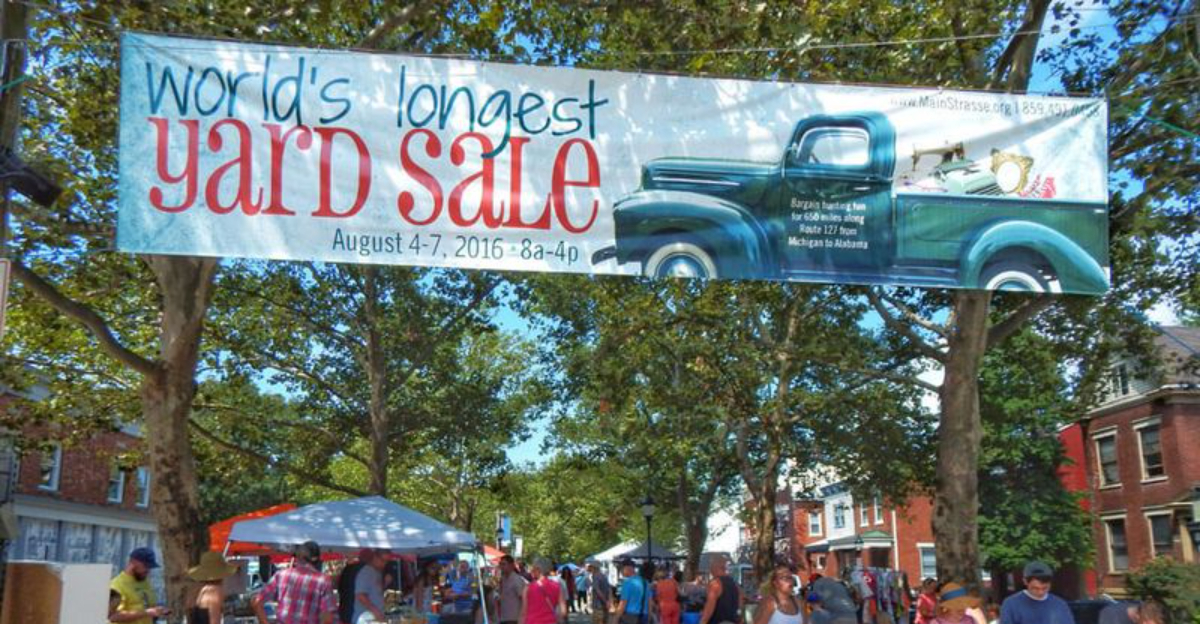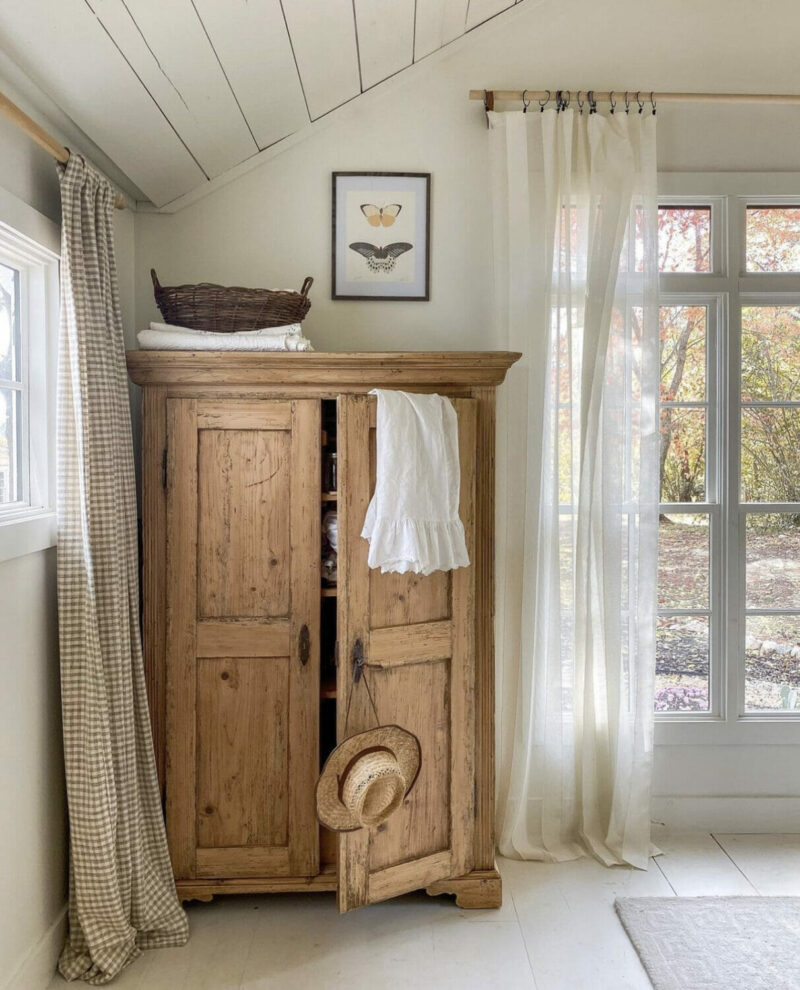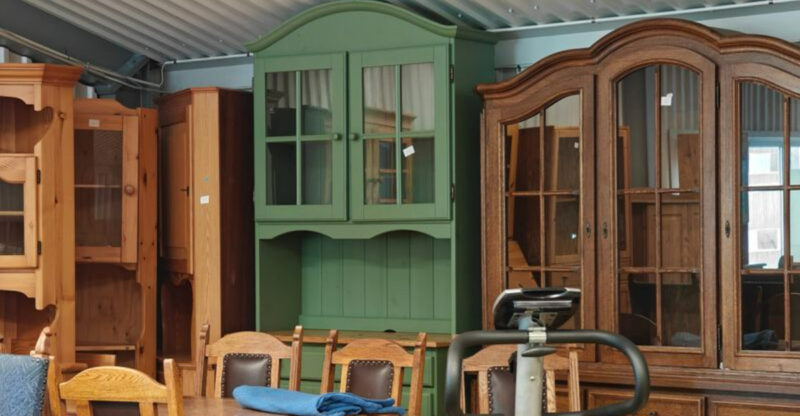People Drive From All Over Kentucky For The Antique Dressers At This Giant Yard Sale

The morning sun rises over winding country roads lined with tables, tents, and the unmistakable hum of bargain hunters at work. Antique dressers gleam beside stacks of old records, weathered tools, and forgotten trinkets that seem to whisper stories from another time.
Along Kentucky’s backroads, the 127 Yard Sale turns quiet fields and front lawns into a living marketplace of history and nostalgia.
The air buzzes with friendly chatter, the smell of kettle corn drifts between booths, and every mile feels like an invitation to slow down and discover something that speaks to the past.
1. The Ultimate Treasure Hunt Across America
Stretching from Michigan to Alabama, this sale covers more ground than most road trips. Vendors set up shop in front yards, parking lots, and open fields, creating a continuous shopping experience.
Families pack their cars and spend days exploring every stop. The journey itself becomes part of the adventure, with surprises waiting around every bend in the road.
2. What Makes The 127 Yard Sale So Iconic
Started in 1987, this event was designed to encourage tourism through rural communities. What began as a small idea has grown into an international phenomenon that attracts buyers from across the globe.
The variety is unmatched – handmade crafts, vintage clothing, farm equipment, and furniture fill every available space. Collectors know they might discover something truly special that would never appear in regular stores.
3. Kentucky’s Section: The Heart Of The Sale
Kentucky’s portion runs through charming towns where hospitality meets history. The landscape offers scenic views of farmland and historic buildings that create a perfect backdrop for antiquing.
Many of the best barn sales happen here, where locals bring out family heirlooms and estate pieces. The concentration of quality furniture dealers along this stretch has earned it a devoted following among serious collectors.
4. What Shoppers Can Expect To Find
Antique dressers steal the show, ranging from Victorian beauties to mid-century modern designs. Oak, walnut, and cherry wood pieces with original hardware often appear at prices far below retail.
Beyond furniture, shoppers discover quilts, pottery, tools, and collectibles. Early birds get first pick, but patience pays off – vendors often reduce prices as the day progresses to avoid hauling items back home.
5. The Best Stops Along The Kentucky Route
Small towns like Russell Springs and Jamestown become bustling hubs during sale days. Local churches and community centers host indoor sales that provide air-conditioned browsing when the August heat becomes intense.
Barn sales on rural properties offer the most dramatic finds. These locations often feature entire estates being cleared out, giving shoppers access to pieces that have been tucked away for generations.
6. Insider Tips For First-Time Visitors
Bring cash, as many vendors don’t accept cards in rural areas. A truck or trailer helps transport larger pieces, though some sellers offer delivery for an additional fee.
Start early – serious collectors arrive at dawn. Wear comfortable shoes and pack water and snacks, since you’ll be walking and standing for hours. Don’t be shy about negotiating prices, especially when buying multiple items.
7. Local Flavor Along The Way
Local diners and food trucks line the route, serving up Southern comfort food that fuels the shopping marathon. Barbecue, fried chicken, and homemade pies provide authentic tastes of Kentucky hospitality.
Taking breaks at these spots offers chances to chat with locals and other shoppers. Many visitors say the friendly conversations and regional cuisine add as much value to the experience as the treasures they find.
8. The Community Behind The Sale
Local residents spend months preparing for this event, organizing their items and setting up elaborate displays. Families work together, with grandparents sharing stories about the furniture they’re selling while grandchildren help with transactions.
The sale brings communities together and provides important income for rural areas. Churches and schools use it as fundraising opportunities, creating a spirit of cooperation that visitors can feel throughout their journey.






